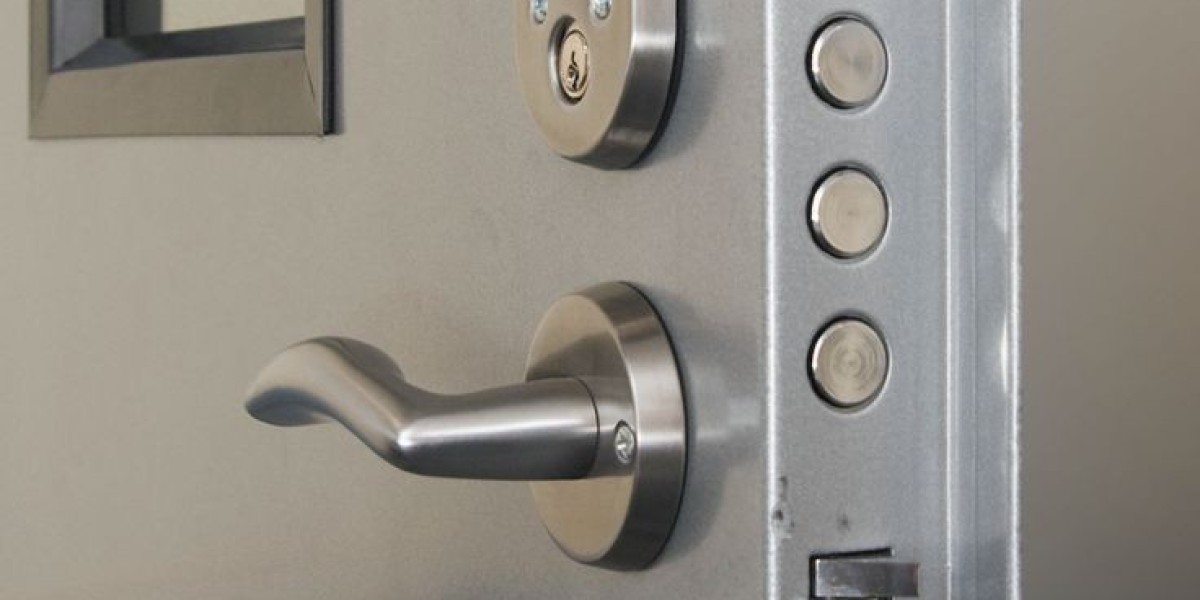When choosing a high-security lock for your home or business, it's crucial to know which features make the biggest difference in keeping your property safe. Below are the top features to look for in high security door locks.
1. Drill Resistance
One of the primary methods burglars use to break into homes is drilling through the lock cylinder to destroy its internal mechanism. A high-security lock should have drill-resistant components to thwart such attempts. Look for locks that are reinforced with materials like hardened steel in the cylinder, making them incredibly difficult to penetrate. These locks often include additional protection like rotating pins or steel balls to prevent a drill from getting a proper grip on the lock mechanism.
2. Pick Resistance
Lock picking is another common technique used by intruders. Standard locks can often be manipulated with simple tools like picks or tension wrenches. locks are designed with pick-resistant features that make it nearly impossible to manipulate the internal mechanism. Look for locks that use complex pin configurations, including mushroom pins, spool pins, or serrated pins, which make picking incredibly difficult. Some high-security locks even feature secondary locking mechanisms that prevent manipulation even if the first layer is breached.
3. Bump Resistance
Lock bumping is a method in which a specially designed bump key is used to force the pins inside the lock cylinder into alignment, allowing the lock to turn. Unfortunately, many standard locks are vulnerable to this technique. door locks often feature bump-resistant mechanisms to counteract this method. They use advanced keyways or additional pins that make bumping ineffective. Some locks are also designed with key control systems that restrict access to key duplication, which further reduces the risk of bumping.
4. Key Control
Key control is a critical feature that limits who can duplicate your keys. With traditional locks, anyone with access to your key can easily make a copy. door locks often come with patented keyways, meaning the keys can only be duplicated by authorized locksmiths or the manufacturer, and only with proof of ownership. This added layer of protection ensures that unauthorized key duplication is impossible, even if someone gains access to your keys.
5. Reinforced Strike Plates
The strike plate is where the lock’s bolt engages with the door frame. In a forced-entry attempt, intruders often try to kick in the door or use tools to break the strike plate. High security locks should come with reinforced strike plates that are made from heavy-duty materials like steel. Additionally, look for strike plates that use longer screws, typically around 3 inches, which anchor the plate deeper into the door frame for added strength.
6. Smart Lock Integration
In today’s digital age, many high security locks can be integrated with smart home systems, allowing for remote control and monitoring. Smart door locks can be controlled via smartphone apps, giving you the ability to lock and unlock your doors from anywhere. These systems often feature tamper alerts, activity logs, and even biometric options like fingerprint or facial recognition. While these features offer convenience and flexibility, they should also include encryption and security protocols to prevent hacking.
7. Strong Bolt Strength
The bolt, or deadbolt, is the part of the lock that extends into the door frame to secure the door. In high security locks, the strength and length of the bolt are crucial. A longer bolt, typically extending at least one inch into the door frame, offers better resistance against forced entry. Some high security deadbolts are made with reinforced materials like hardened steel, which adds even more durability and strength.
8. Weather Resistance
If you're installing high security locks on exterior doors, they need to withstand various weather conditions without compromising their functionality. Locks exposed to the elements should be corrosion-resistant and capable of operating in extreme temperatures. Look for locks that have been tested for durability in wet, cold, and hot environments, ensuring they will continue to perform well over time.
9. Tamper Detection and Alerts
Many high security locks now come with advanced features like tamper detection. These locks can alert you if someone attempts to manipulate or break the lock. This feature is especially valuable in smart locks, which can send real-time notifications to your phone, alerting you to suspicious activity even when you're away from home. Some locks also come with built-in alarms that sound if someone tries to tamper with them, deterring potential intruders.
10. High-Quality Materials
Lastly, the overall build quality of the lock is essential.door locks should be constructed from high-grade materials, such as solid brass, hardened steel, or stainless steel. These materials not only provide strength and durability but also resist tampering techniques like sawing or prying. Locks made from cheaper materials are easier to break or manipulate, so investing in a well-constructed lock is crucial for long-term security.
Conclusion
When selecting locks, it’s important to focus on features that offer real protection, not just the appearance of security. Drill and pick resistance, bump protection, key control, and reinforced strike plates are all essential. Pair these with modern conveniences like smart lock integration, tamper detection, and high-quality materials for maximum security. With the right lock, you can significantly reduce the risk of burglary and enhance the overall safety of your home or business.



